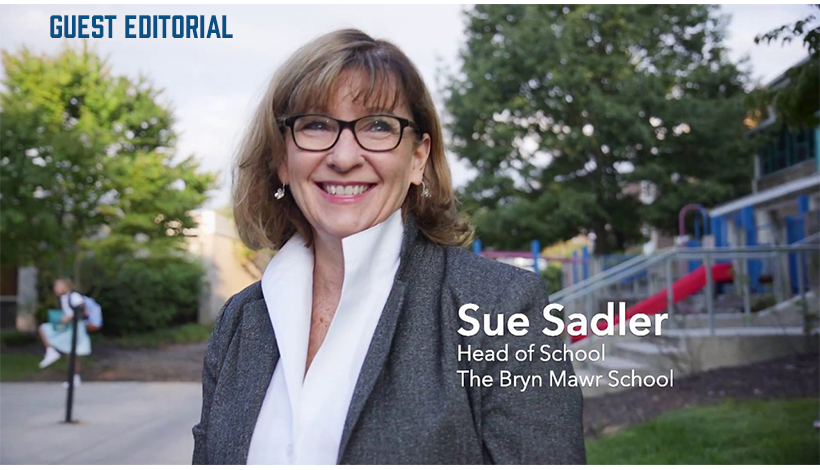
By Sue Sadler, Head of School, The Bryn Mawr School (MD)
My students are quite fond of a game called “Never did I ever.” Well, never did I ever think that being a head of school would mean navigating through a pandemic and making an on-a-dime shift to distance learning. I certainly don’t need to enumerate the challenges we have encountered in the spring 2020. I am sure you are living them every day.
I want to take a slightly different approach, though, and talk about the opportunity this pandemic is presenting. For my entire career (seriously, 40 years) I have been hearing that we want to shift from teacher-centered classrooms to student-centered classrooms. We’ve made only moderate progress. I would argue that our classrooms have more choice, more encouragement, and better support for different learning styles. But does that mean that students have taken more responsibility for their own learning? Not yet, and the sudden shift to distance learning has exposed some serious flaws in our practices. Students are still primarily extrinsically motivated by grades and resumes that pave a path to selective colleges, and our schools are currently designed to perpetuate this system.
Our first-generation distance learning efforts have provided continuity of learning primarily by moving face-to-face classroom practices online. While this has allowed for a quick pivot and has saved the year for most students, I think it’s clear from the burden we are all feeling that our current practice isn’t sustainable. While students may initially have been intrigued by Zoom classes and more self-paced learning, glazed eyes, missing work and less frequent attendance tell us that their engagement is waning. Not all face-to-face lessons transfer successfully to online delivery and student engagement is suffering.
In order to thrive in the next normal, a world in which we alternate between online and in-person classes, we’ll need to redesign our pedagogy. This is going to require some backward engineering by thinking about what learning dispositions we want students to have upon the completion of their time with us. This question can be scaled down to individual unit objectives or scaled up to describe the graduates of our schools. At the grandest scale, we want students who have acquired a love of learning and who are fully equipped to continue learning throughout their lifetimes. We want to produce citizens who can think for themselves, communicate and collaborate with others, and create both artistically and as a solution to problems. And importantly, we want independent self-starters who are persistent in their quest for knowledge. In other words, we want students with social-emotional expertise. This digital world most likely reflects the future of work for them.
If we hope to capture the attention of our students, especially online where it’s so easy to slip away, we’ll need to put relationships and inspiration at the center of our teaching. Designing each course to reinforce the major competencies we want to develop and creating rubrics that measure growth need to be key components of our next generation of teaching. Personally meaningful, student-driven projects have a much higher likelihood of keeping students energized and can move fluidly from face to face to online and back. The student as driver of these projects is key; teachers can coach students toward higher order thinking skills which are transferrable between disciplines and content genres. Assessments that encourage and track growth are essential.
Change of this magnitude will take a culture of commitment amongst educators and will actually redefine what it means to be an excellent teacher. We often hear that change takes time. We proved otherwise in the past three months. Dramatic changes were accomplished. Now, we need to capture the energy and successes of this moment and use those to catapult us into the next generation of learning, with student-centered, student-driven practices firmly anchored in the framework. We need to rethink some of our most basic assumptions—schedules, assessments, silos, and tech tools—to empower and engage students as the driving force in their own learning. After all, their lifelong learning has just begun.
This pandemic can result in meaningful change if we let it. Let’s not wait another 40 years to get this done.



